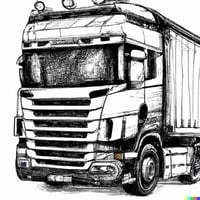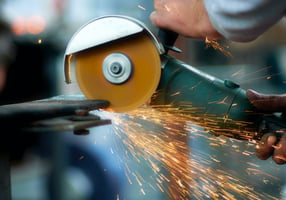Scania, a leading supplier of sustainable transport solutions, was facing a problem. They were...
Remanufactured Gearboxes are Transforming Sustainable Manufacturing
Sustainability is no longer a niche consideration in the manufacturing world; it’s becoming the standard. The pressure to reduce emissions and optimize resources is felt across all industries, including heavy vehicle manufacturing. That’s why Scania’s recent breakthrough in the use of remanufactured gearboxes on their production line is not just impressive—it’s transformative.
For anyone working in the world of Configure, Price, Quote (CPQ) systems, this shift towards sustainability also opens new doors for efficiency and innovation in production planning.
Scania’s iReGear research program has proven that it’s possible to integrate remanufactured components into the production line for new vehicles. This means fewer raw materials, less energy consumption, and a significant reduction in carbon emissions. The gearbox built in this project used 50% fewer new parts and slashed emissions by 45%.
This isn’t just a win for Scania; it’s a major leap for the entire automotive and manufacturing industries.
What Does This Mean for CPQ?
At first glance, the success of Scania’s iReGear project might seem solely relevant to production. But this shift impacts every phase of a company’s operations, including how they configure, price, and quote their products. CPQ systems are built on the premise of flexibility, efficiency, and precision—exactly the kind of agility that’s necessary when implementing a circular manufacturing system like the one Scania is pioneering.
With remanufacturing, product configurations become even more complex. Manufacturers must now account for parts that vary in wear and tear, replacement rates, and performance levels. For example, in the iReGear project, the replacement rates for gearboxes ranged from 10% to 100%. This adds layers of variability that CPQ systems need to manage, but it also presents an opportunity for greater precision in quoting and pricing.
Circular Manufacturing and the Future of CPQ
The shift to circular manufacturing systems — where remanufactured parts are seamlessly integrated into new products — means CPQ solutions must adapt.
No longer will companies rely only on standardized parts lists or fixed product configurations. Instead, manufacturers will need to dynamically adjust for the availability and condition of remanufactured parts.
For a CPQ consultant, this trend underscores the importance of advanced modeling capabilities and flexible pricing engines. Systems like Tacton CPQ, which already support complex configurations and real-time pricing, are well-positioned to adapt to this new reality. As more manufacturers adopt circular systems, the demand for CPQ systems that can handle these complexities will only grow.
The benefits are clear: not only does this approach contribute to sustainability goals, but it also offers a potential cost advantage. Remanufactured parts generally cost less than new ones, allowing manufacturers to offer more competitive prices without sacrificing quality.
CPQ in Sustainable Production
At cpq.se, we’ve always emphasized the need for efficient and adaptable systems. Scania’s example shows how essential this is in today’s manufacturing landscape. Circular manufacturing models will soon require CPQ systems to take into account not just the standard pricing of new parts, but also the varying costs of remanufactured components. This can involve complex configurations where some parts are new, others are reused, and all must meet strict quality standards.
Advanced CPQ solutions, like those we work with, can help companies model these configurations and provide accurate pricing, no matter the mix of new and remanufactured parts. Tacton’s powerful configuration engine, for instance, is already designed to handle this level of complexity, ensuring manufacturers stay agile and competitive.
Preparing for the Future
Scania’s project marks a turning point for both manufacturing and CPQ. By demonstrating that remanufactured parts can meet the same standards as new ones, they’ve paved the way for a future where sustainability and efficiency go hand in hand. For CPQ professionals, this means preparing for an increasingly complex and variable production landscape. It’s not just about configuring the right product for the right price anymore; it’s about doing so in a way that aligns with the values of a circular economy.
If you want to learn more about Scania’s groundbreaking remanufacturing initiative, check out their full article here. As we continue to see these trends grow, it’s clear that the future of manufacturing—and CPQ—will be shaped by sustainability.
Looking for ways to future-proof your own CPQ systems? At cpq.se, we can help you navigate the complexities of modern manufacturing. Book a virtual coffee with our experts, Magnus and Patrik, to explore how CPQ can support your sustainability goals. Schedule a meeting here.




